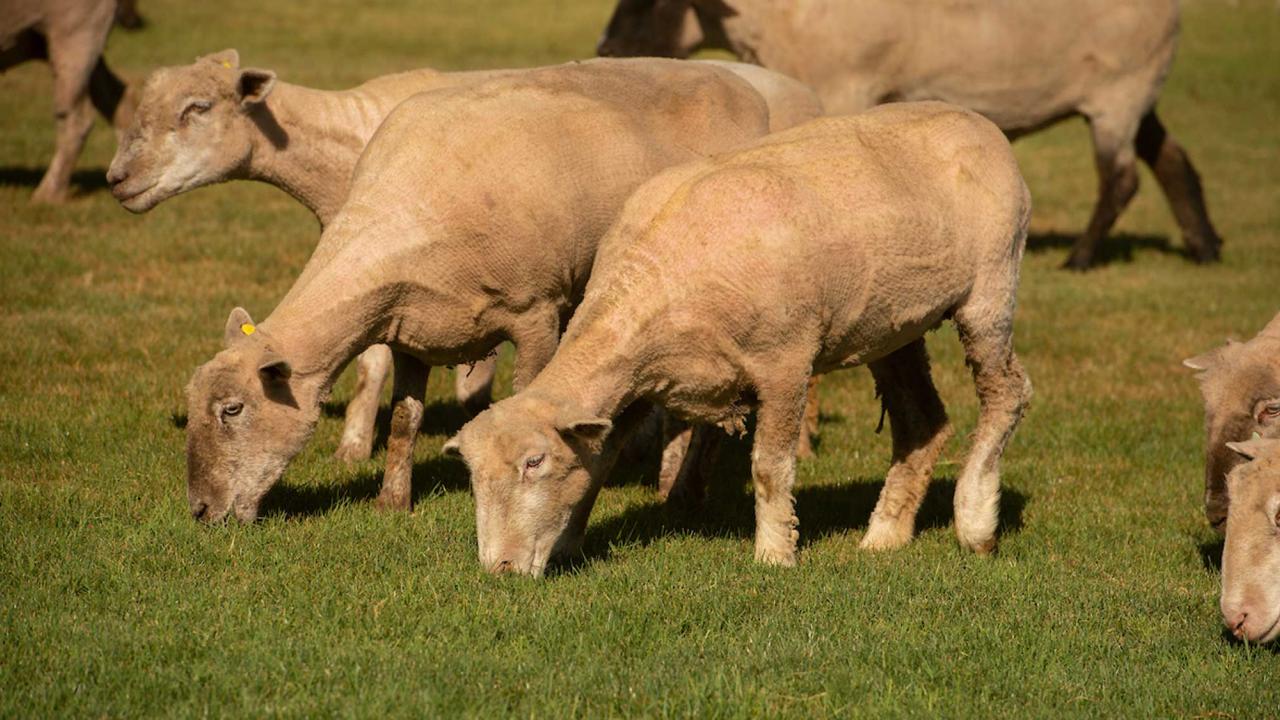Quick Summary
- Pilot project will initially take three days, with more intermittent grazing through summer
Sheep are grazing the University of California, Davis, campus gateway on Old Davis Road this week in an academic experiment to see if sheep can eat weeds and grass, fertilize and control pests as well as or better than using conventional landscaping methods.
The woolly ewes are part of a multidisciplinary study to explore the possibilities of improving the living and working environments for people as they intermingle with nature — and it may save the campus money and resources at the same time. The pilot project starts with a three-day run in the Gateway District, Wednesday through Friday (May 5-7), and continues intermittently at other campus locations throughout the summer.
“My interest is taking the science on green infrastructure and sustainability and designing it so it’s interactive, beautiful and practical,” said A. Haven Kiers, assistant professor of landscape architecture in the College of Agricultural and Environmental Sciences, who is leading the project.

Sheep are welcome addition
Campus landscape managers welcome the sheep.
“This is a perfect partnership,” said Tyson Mantor, Arboretum and Public Garden associate director. “We pride ourselves on the many sustainable landscape maintenance efforts we currently use to keep our grounds beautiful. We welcome sheep to the effort.”
SHEEP CAM
Looking for some calm in the midst of your day? Log on to the “sheep cam,” where you can “just watch sheep grazing,” Kiers said. “Wouldn’t that be a wonderful way to take a break? I’m so excited about this.” The sheep cam will be available from 10 a.m. to 2 p.m. Wednesday through Friday, May 5-7, on Instagram: @UCDavis_sheepmowers.
Kiers has hired student sheepherders to watch over the sheep’s three-day stay on the grassy area between the Hyatt Place hotel and the future home of the C.N. Gorman Museum (formerly Nelson Hall and, before that, the University Club), adjacent to the UC Davis Arboretum.
The pilot project will address the question: how can science, design and practice converge to inform the creation of accessible, multifunctional greenspaces that maximize cultural and environmental values? Kiers is a longtime proponent of green infrastructure such as green roofs you can grow plants on, and urban landscapes that are aesthetically pleasing as well as ecologically productive. Grazing sheep are a natural outgrowth of that research.
She said she is bringing to the campus her concept of Nature HEALS (for health, engagement, aesthetics, landscapes and sustainability) to emulate a historical practice throughout France, and even at the White House and in Central Park, and bring a pastoral setting to UC Davis — and hopefully spawn that idea for other campuses and municipalities at a grander scale.
“It was the romantic nature of it that got me started thinking about it. And, at the same time — How do I make it chic?”
Working sheep
The 25 UC Davis sheep are commuting to work each day. The mature breeding ewes are trailered each day from their barns and fields on the west side of campus to a one-acre site on central campus each day at 8 a.m. They will eat weeds (these are like candy, Kiers said) and then grass (more like carrots and celery). Then at 5 p.m., after a day of snacking, they will be transported back to stay the night and be fed their regular meals at home in their barns.
There are four breeds of sheep, who are all being used for their wool, taking part in the study: Suffolk, Hampshire, Southdown and Dorset, said Matthew Hayes, who manages the sheep for UC Davis and will coordinate their arrivals and departures each day.
Along the way, the well-nourished sheep will drink plenty of clean water provided for them and fertilize the lawn below. No worries about cleanup, said Kiers. “It (the manure) only stays for 10 days, and it actually attracts insects that are beneficial for the landscape.”
As a control, an adjacent traditionally landscaped acre of grassland will be maintained by campus in the usual way. The grass height and condition will be assessed on each site before and after grazing.
In a proposal she presented to campus, Kiers said: “Sheep can eliminate invasive plants and restore native grasses, reduce carbon emissions, introduce beneficial insects attracted to their waste products, and improve soil health without compacting the soil. Culturally, the addition of sheep to a green space can add pastoral beauty to a site, provide a sense of place, inspire urban agritourism, serve as a living educational tool, and promote mental health.”
There is however, little peer-reviewed evidence to support those claims as they apply to urban lawn landscapes, she added. Kiers aims to change that with her research, which she hopes to spread to other parts of campus — and the world — in the future.
Media Resources
Media Contact:
- Karen Nikos-Rose, News and Media Relations, kmnikos@ucdavis.edu, 530-219-5472
